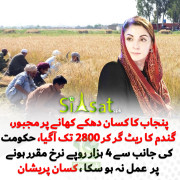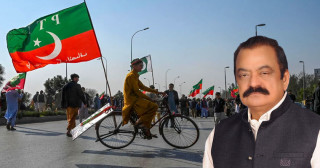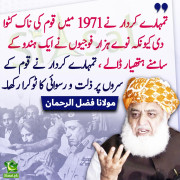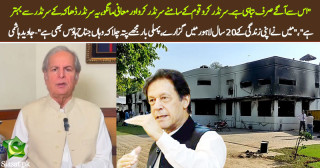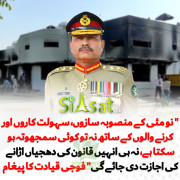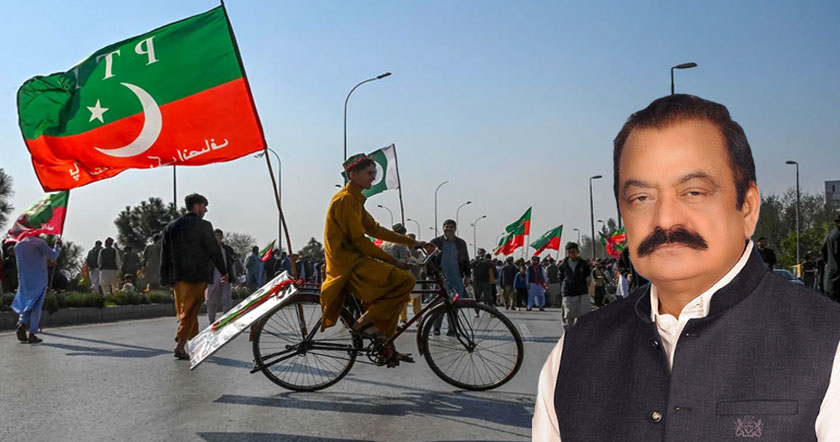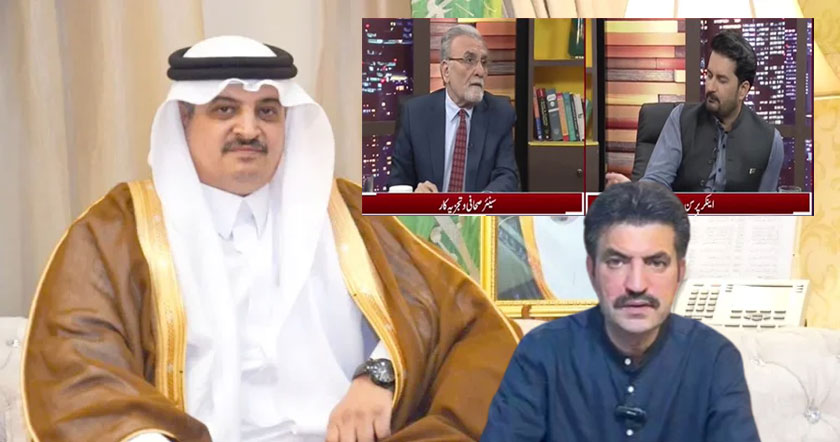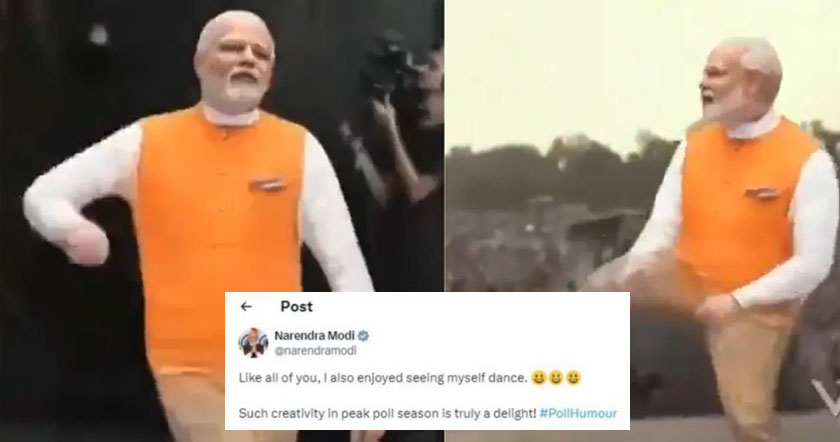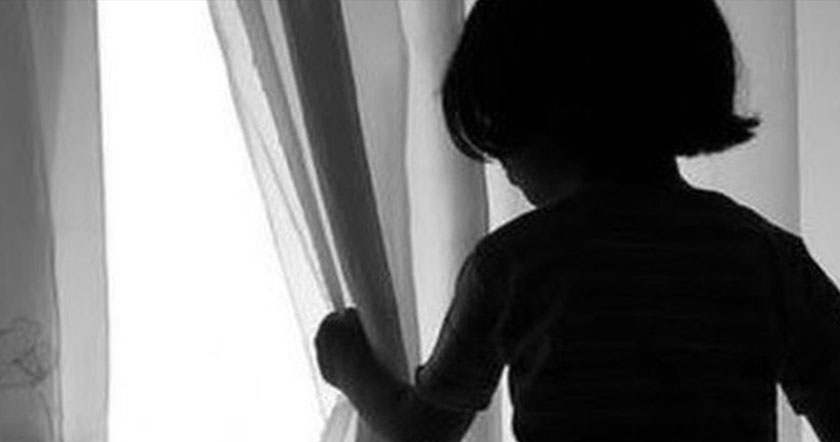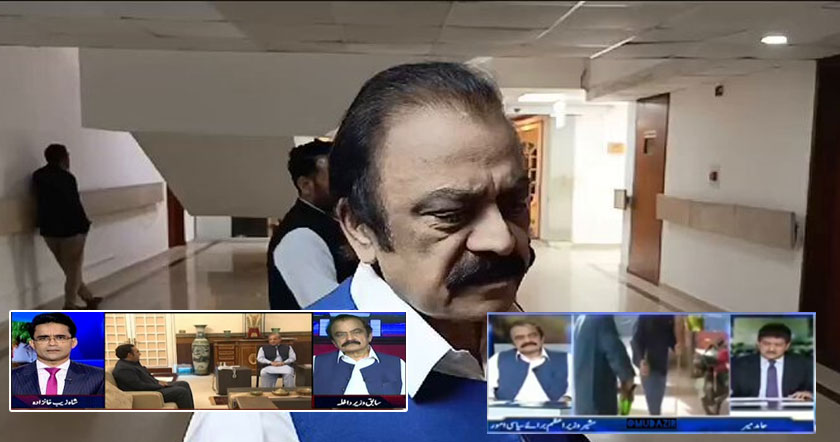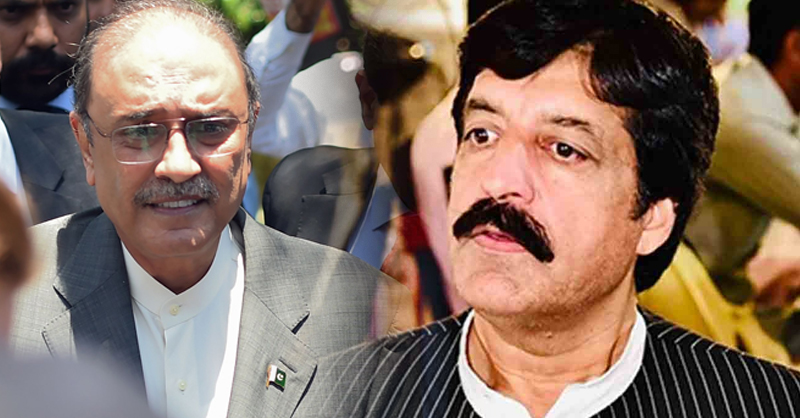Laurent Gayer, Nida Kirmani and Zia Ur Rehman

The front page of Janbaz, Feb. 3, 2017. Credit: Zia Ur Rehman
On February 2, the Pakistan Rangers (Sindh) announced the death of Noor Muhammad, alias Bada Ladla, during an encounter in Karachis volatile inner city. Ladla was certainly the most dreaded gangster of Lyarione of its most resilient too: this was the third time that he had been declared dead in less than three years.As often in these murky circumstances, the matter was settled by Janbaz, Lyaris most widely read newspaper. The next day, the front page of the newspaper stated that, The Rangers have sent Baba Ladla to join Rehman Dakaitan allusion to another legendary figure of the local crime scene, who was killed by the Karachi police in 2009. But what really carried public conviction were the photographs. Besides some clichs of Baba Ladla in his prime was a grisly picture of a bearded man soaking in blood, missing a significant part of his skull.
The photograph was flanked by the mortuary masks of two of his acolytes killed in the shootout. These images also seemed to have been taken at one of the citys morgues.As gruesome as they might seem to the untrained eye, such images are nothing new to Lyaris residents. For many years, they have been assaulted with a daily dose of blood and dirt from the local media, with Janbaz being the uncontested jewel of Lyaris gutter press.
Janbaz, which literally means those putting their lives at play or the fearless, was launched in 1999 by the small media group, Kainat, which runs a few more print publications and three TV channels. The five-rupee newspaper gained notoriety at the height of the gang war between Rehman Dakait and his archrival Arshad Pappu in the mid-2000s, mainly for its coverage of criminal and political violence in Lyari. For its detractors, Janbaz provided a platform for gang leaders to aggrandize themselves; it also fuelled the conflicts between gangs through the publication of provocative statements, with some gang commanders (and the odd maverick police officer, such as Haq Nawaz Commando, alias Dabang) even hurling death threats at their rivals through its front-page headlines.
More than any other material published in Janbaz, the ghastly pictures of the laashain (bodies) appearing everyday on the front page have been a matter of controversy for the 20,000 to 30,000 estimated readers of the paper (a figure which can go up to more than a hundred thousand during the most intensive episodes of gang warfare). These readers are concentrated in Lyari but can also be found in other parts of the city, such as Malir, where residents have familial or historical ties to Lyari. Until violence receded in Lyari and Karachi at large a couple of years ago, many readers saw in the crudeness of these photographs a mark of authenticity, restoring certainty in a troubled world. These images and the stories that accompanied them were not always taken at face value, though. After all, this newspaper was made in Karachi, a city where even the dead are not always what they seem to be.

Reading the March 2, 2015 edition of Janbaz at a dhaba in Agra Taj Colony, Lyari. Credit: L. Gayer
Bringing out the dead
Janbaz was not the first Urdu newspaper of Karachi to publish pictures of the dead on its front page. This editorial practice became common during Operation Clean-up (1992-1994) when the army was deployed in the city to teach the Mohajir Qaumi Movement (MQM) a lesson and to dismantle its so-called state within a state. The dissident faction of the MQM (Haqiqi) allegedly received the support of the army, and its militants turned against their former comrades in many localities of District Central and District East. Every day, bodies bearing torture marks were being found in gunny bags dumped in the streets and sewers of the city. The bori band laash was fast becoming Karachis most iconic artefact, and some editors were determined to give it the coverage it deserved.

Newspaper seller Muhammad Saleem in Kalri, Lyari in March 2015. Credit: L. Gayer
This editorial move was encouraged by the competition between eveningersthose Urdu dailies that resemble tabloids and that are focused mainly on sensationalized stories related to crime and violence. Most prominent among these newspapers reputed for their sulphurous mizaaj (flavour) were Qaumi Akhbar and Awam, and it was their photographers who were expected to provide a steady diet of the dead each day.One such photographer was Athar Hussain, who started working at Qaumi Akhbar in 1995. By then, the army had retreated from Karachi but the tussles between MQM factions and law-enforcement agencies (the police and the Rangers) were more ruthless than ever. The city seemed to be on the brink of a full-blown civil war and for his first assignment, Athar had plenty on his plate.
Every crime photographer has a trick to reach the scene before everyone else. Weegee tuned in to police radio while Enrique Metinides was embedded in the rescue teams of the Mexican Red Cross. Athar Hussains solution was to maintain close contacts at the Police Centre and at the control room of the Edhi Foundation, Karachis largest philanthropic organization. This cost him a few gifts every yeara nice meal here, a diary therebut it was worth it as within minutes of a killing being reported to any of these call centres, his pager would start beeping. He would then hop on his motorcycle or jump into an Edhi ambulance, often reaching the spot before the cops. This sometimes made him suspicious in the eyes of the police but it also helped him build his street cred. By his own admission, he was very aggressive and soon became famous for taking on the spot pictures of the dead. Being unmarried helped, he says, recalling how he would wake up at 5am, work throughout the day and then hang out with the press club crowd in the evening.The same year, Major General Naseerullah Babar launched yet another crackdown against the MQM. And once again, newspaper editors felt that publishing the faces of the deceased would sell more copies as having pictures of dead bodies meant your newspaper would flash.
Qaumi Akhbars editor, Ilyas Shakir, was particularly insistent as photographer Athar Hussain discovered. If you missed even one dead face you would get a notice [from the editor] the next day, he says. So if 25 to 30 people were killed, we needed to get their faces in. I would be really happy if my photo of the corpse would print in three columns.
As the number of victims of state terror and political violence kept ratcheting up, it became impossible for Athar to hit up every crime scene in the city. A simple solution was to go to the place where they would all end up: the morgues. Personal contacts helped there as well. He became acquainted with a chowkidar working at one of the citys prominent hospitals, who gave him privileged access to the otherwise forbidden room: I used to go to this morgue. The chowkidar would chuck the keys over the wall and I would go in and quickly take pictures of the laashain.
These lonesome encounters with the dead could be a trying experience. The comforts of routinepull down the sheet, uncover the body, click, pull back the sheetdid not shield him from shock. Athar still vividly remembers the day when one of the corpses he was photographing started moving: I was alone in the room and as I pulled down the sheet, his arm dangled from the edge of the bed. I felt really scared! Panicking, he went to get the Medico-Legal Officer (MLO) and informed him that this dead man didnt seem so dead after all. The MLO calmly replied that he was dead all right, after receiving multiple gunshots. His arm had simply become stuck in the sheet before the onset of rigor mortis. This happened because it was a fresh death (taza tha). He had been dead for only two to three hours, Athar explains.The whodunnit was never his concern: Who died, why, what for, those were not questions for me, he says. Rather, the photo itself was his trophy.
My sole motivation was to get pictures to put on display on the front page of the newspaper, so that people would praise me.Soon enough, however, Athar Hussain and his employers realized that the power of these images exceeded both their own commercial motivations and the voyeurism of the public: When a death happened, the MQM would blame the government. Every time a dead body was found, they would say, Government ne marke phainka hai (the government has dumped the body after killing that guy). This would earn them (the MQM) a lot of sympathy.
Dead certainty?
For the last decade or so, it has become less common for Urdu newspapers to publish pictures of bodies on their front page. Dr. Tausif Ahmed Khan, who teaches journalism at the University of Karachi, says that after the emergence of the electronic media in the early 2000s, rules of conduct were decided, forcing newspapers to stop publishing violent and horrifying pictures.Urdu newspapers with a focus on Lyari never cared much for these rules, however. In addition to Janbaz, the now defunct Josh (Fervour) was a case in point. To this day, gruesome images continue to be published in Janbaz on an almost daily basis. Each full-colour photograph is accompanied by a caption indicating the name of the deceased, the location and the cause of death. Most of the victims are residents of Lyari, but if no one is killed in the neighbourhood on a given day, pictures of people murdered in other parts of the city will be published. The crudeness of these images has been subject to much criticism, especially from its most educated readers. Even Iqbal Swati, a forty-something Janbaz photographer known by the self-explanatory nickname of Morchary (Mortuary), says he avoids bringing the newspaper home to spare his children.At the same time, many readers of Janbaz ascribe these images with a peculiar power to establish proof in a context in which extrajudicial killings by state and non-state actors are commonplace. Here, the rules of evidence are reinforced by market forces. As a thirty-something reader employed at the Karachi Municipal Corporation says, Jo dikhta hai, voh bikhta hai (what you see is what you get). These images would sell because they tell the truth, and vice versa.

Passersby reading the front page of Janbaz on March 2, 2015 in Agra Taj Colony, Lyari.
Credit: L. Gayer
Like veterans of crime photography such as Athar Hussain, Janbaz photographers also argue for the power of unveiling of their images, and the liberating effect it has for the families of the victims. We help people, says Janbaz photojournalist Iqbal Swati. Thanks to the photos of corpses published on the front page of Janbaz, several people have found traces of missing relatives. After seeing their photo in the newspaper, they often come to see us. We give them the original photos and tell them where they were taken. In an environment of perpetual insecurity, such access to information can provide closure for the relatives of those who may otherwise remain indefinitely namaloom and lapatta (unidentified and missing).
The utility of this mechanism is confirmed by Adnan Baloch*, a resident of Lyari whose brother disappeared in April 2016 after plainclothes men picked him up from his home. Baloch, who claims that his brother had no connection with the Lyari gangs, spent the next few months looking for him in police stations, Rangers offices and hospitals across the city. His quest was brutally interrupted three months later when he discovered on the front page of Janbaz the image of a corpse found in a peripheral locality on the road to Balochistan.
On the same day, he says, I went to Janbazs office and asked them to give me the original photo and tell me the exact location where they found the body. It was then confirmed that this was my brother.These macabre discoveries can also satisfy a desire for vengeance. Mir Ashfaq Baloch, a Lyari-based politician, is another regular reader of Janbaz. On January 17, 2016, his younger brother Mir Ishtiaq Baloch, alias Mullah Pappu, who had contested local government polls from Union Committee 8 of Lyari, was killed outside his office on Ahmed Shah Bukhari Road. Gulabo, a gang commander loyal to Baba Ladla, was suspected to be behind the murder. Mir Baloch said that there were several rumours of Gulabo being killed in shootouts with the law enforcement agencies.
I heard that on the night of November 8, the police killed Gulabo in a shootout in Musharraf Colony. I could only confirm it when I saw the photo of his laash the next day in Janbaz.For Janbazs Iqbal Swati, who works with rudimentary equipment (the G5, a low-end compact camera by Canon), everyone can claim that someone was killed, but a picture tells the truth. The low technical standards of these images tend to reinforce their veracity, even if the blood of those pictured tends to be clumsily colour-enhanced for effect. As Susan Sontag writes in her last essay on war photography, pictures of hellish events seem more authentic when they dont have the look that comes from being properly lighted and composed.The outsourcing of some of this photographic work to readers also endows it with a promise of immediacy. While sparing the newspaper the burden of reporting across the city, subcontracting these images provides readers with a representation of reality that circumvents professional journalists, who are always suspected of interfering with the naked truth. ?
Some of the photographs of corpses published on a daily basis are sent to the paper by readers who arrived at the scene before the police or the ambulances of the Edhi Foundation, two institutions in which the journalists of Janbaz have key informants helping them with their own forensic pictures. The use of subcontractors, who generally send their photographs via Whatsapp, is even more common for homicides occurring outside Lyari. This works well for Janbazs photographers, who are not always welcome as the newspaper has attracted many enmities in Lyari over the years. Iqbal Swati says, for example, that he was tortured several times by local thugs, and that he has been repeatedly robbed of his mobile phone, his camera, and even his motorcycle. Like other members of Janbazs editorial team, he limits his movements in Lyari and relies on a local network of informants and occasional contributors.
Thirty-five year old Akbar Jan, a resident of the Mai Garhi area of Manghopir, has been reading Janbaz for the last ten years, mostly out of curiosity over the feats of Lyaris gangsters. A few years ago, he contacted reporters and photojournalists working with the newspaper. They [journalists] cannot come to Manghopir easily to cover crimes and take photos of those killed in violent incidents, he says. So, occasionally I provide them with information and take photos for them. Akbar Jan says that a number of photos he took and sent to Janbaz have been published. I still keep those newspaper copies, he says.Not all inhabitants of Lyari buy into this promise of veracity-through-immediacy, though. As Saeed Khan, another photographer working for Janbaz explains: When we take photographs of corpses in the morgue, sometimes we face major problems, especially when the families of the victims arrive and throw the journalists and the photographers out because they are afraid that we will write that their relative was affiliated to this or that group.
In addition, it seems fairly frequent for the parents of victims to burst into the newspaper office and protest against their loved ones, both living and dead, being labeled gangsters. After that, we must publish disclaimers and explain that we were wrong and that in reality, that person was not related to any [criminal] group. Sometimes the police mislead us, Khan says. But once a picture has been published, the damage has already been done. For example, one young man who was accused of being affiliated with the gangs on the pages of Janbaz was eventually sent to Dubai by his family as a means of protection until things cooled down.As with any other image, reading these photographsor in this case simply viewing them without flinchingis the outcome of a learning process. An illiterate housewife living in the troubled area of Kalakot in Lyari has been reading the paper for several years by looking at the photographs and having family members read stories out to hera common practice in a context when many members of the older generation are illiterate. She explains how she initially struggled to look at the images of bloody corpses, how frightened she would get, and how she eventually hardened or became mazboot after years of exposure to them.During the period of heightened conflict between rival gangs and law-enforcement agencies, many mothers spoke about reading Janbaz as a means of protecting their children from exposure to violence. Neelofar* said she only bought the newspaper during particularly tense periods to find out what happened and what was going to happen in order to make her children aware of possible dangers and to help them navigate the violence unscathed. Ghumnaam, a local poet and critic of the newspaper, even referred to Janbaz as Nostradamus because of its seemingly visionary qualities. While readers may take what they read with a pinch of salt, in a climate of uncertainty and a context in which the mainstream press only selectively reports on Lyari, some information is still better than none at all.

Taking a glimpse at the front page of Janbaz on March 2, 2015 in Agra Taj Colony, Lyari. Credit: L. Gayer
For the readers of Janbaz, the appeal exerted by these images does not only have to do with a search for authenticity in a troubled world. When describing their addiction for the paper, readers often use words such as maza or chaska. From the most assiduous to the most furtive of readersthose who content themselves with a mere peak at the bloody front page on newsstandsalmost everyone acknowledges that there is also some pleasure to be derived from this cruel spectacle.
This is what Muhammad Saleem, a 38-year-old Kathiawari running a newspaper kiosk in the Kalri locality of Lyari, suggested: People enjoy reading Janbaz. By reading it they become really addicted. If you tell them that the newspaper is out of print and you suggest they buy another title, they will say, Oh, it must have been a nice bundle of lies today to sell so well! When two or three wickets fall [when two or three people have been killed], they are not happy. What are two or three wickets? they ask. Give us more news! they say.Other residents speak about reading Janbaz because, if nothing else, it is their newspaper. Shagufta*, who lives near Timber Market and reads the newspaper religiously, says people like her read Janbaz because it is the only newspaper that covers Lyari so extensively: Galli galli ki khabar hoti hai (it reports the news of every street and lane.) In a context in which many residents feel otherwise marginalized, a hyperlocal newspaper solely dedicated to their area restored in them a sense of self worth and marked their place within the cityeven if all the news reported about the area was negative.
Neither utilitarian nor moralist approaches la Sontag take the full measure of what is at stake here, in the thousand and one ways that the readers of Janbaz have to navigate these illustrated news and arrange themselves with a troubling reality. The relation of the readers of Janbaz with their favourite journal is irreducible to its monitoring function of an unstable environment. In a context where many are unemployed or underemployed, Janbaz can also be experienced as a form of timepass and can provide fodder for idle gossip among neighbours and friends, which suggests that the nonchalant consumption of horrific news is no monopoly of Western societies. This is not to say that these readers have been numbed by the spectacle of ordinary violence, or dumbed by the overflow of fake news. Even though they enjoy being taken for a ride now and then, they havent surrendered to the idea of living in a post-truth era.
*Names changed to protect the anonymity of the respondent.
Laurent Gayer is a Senior Research Fellow at the Center for International Studies and Research (CERI), Sciences Po, Paris, and the author of Karachi. Ordered Disorder and the Struggle for the City, London, Hurst, 2014
Nida Kirmani is Associate Professor of Sociology at the Lahore University of Management Sciences (LUMS)
Zia Ur Rehman is a senior journalist, covering Karachi at The News International
http://www.thefridaytimes.com/tft/bodies-of-evidence/

The front page of Janbaz, Feb. 3, 2017. Credit: Zia Ur Rehman
On February 2, the Pakistan Rangers (Sindh) announced the death of Noor Muhammad, alias Bada Ladla, during an encounter in Karachis volatile inner city. Ladla was certainly the most dreaded gangster of Lyarione of its most resilient too: this was the third time that he had been declared dead in less than three years.As often in these murky circumstances, the matter was settled by Janbaz, Lyaris most widely read newspaper. The next day, the front page of the newspaper stated that, The Rangers have sent Baba Ladla to join Rehman Dakaitan allusion to another legendary figure of the local crime scene, who was killed by the Karachi police in 2009. But what really carried public conviction were the photographs. Besides some clichs of Baba Ladla in his prime was a grisly picture of a bearded man soaking in blood, missing a significant part of his skull.
The photograph was flanked by the mortuary masks of two of his acolytes killed in the shootout. These images also seemed to have been taken at one of the citys morgues.As gruesome as they might seem to the untrained eye, such images are nothing new to Lyaris residents. For many years, they have been assaulted with a daily dose of blood and dirt from the local media, with Janbaz being the uncontested jewel of Lyaris gutter press.
Janbaz, which literally means those putting their lives at play or the fearless, was launched in 1999 by the small media group, Kainat, which runs a few more print publications and three TV channels. The five-rupee newspaper gained notoriety at the height of the gang war between Rehman Dakait and his archrival Arshad Pappu in the mid-2000s, mainly for its coverage of criminal and political violence in Lyari. For its detractors, Janbaz provided a platform for gang leaders to aggrandize themselves; it also fuelled the conflicts between gangs through the publication of provocative statements, with some gang commanders (and the odd maverick police officer, such as Haq Nawaz Commando, alias Dabang) even hurling death threats at their rivals through its front-page headlines.
More than any other material published in Janbaz, the ghastly pictures of the laashain (bodies) appearing everyday on the front page have been a matter of controversy for the 20,000 to 30,000 estimated readers of the paper (a figure which can go up to more than a hundred thousand during the most intensive episodes of gang warfare). These readers are concentrated in Lyari but can also be found in other parts of the city, such as Malir, where residents have familial or historical ties to Lyari. Until violence receded in Lyari and Karachi at large a couple of years ago, many readers saw in the crudeness of these photographs a mark of authenticity, restoring certainty in a troubled world. These images and the stories that accompanied them were not always taken at face value, though. After all, this newspaper was made in Karachi, a city where even the dead are not always what they seem to be.

Reading the March 2, 2015 edition of Janbaz at a dhaba in Agra Taj Colony, Lyari. Credit: L. Gayer
Bringing out the dead
Janbaz was not the first Urdu newspaper of Karachi to publish pictures of the dead on its front page. This editorial practice became common during Operation Clean-up (1992-1994) when the army was deployed in the city to teach the Mohajir Qaumi Movement (MQM) a lesson and to dismantle its so-called state within a state. The dissident faction of the MQM (Haqiqi) allegedly received the support of the army, and its militants turned against their former comrades in many localities of District Central and District East. Every day, bodies bearing torture marks were being found in gunny bags dumped in the streets and sewers of the city. The bori band laash was fast becoming Karachis most iconic artefact, and some editors were determined to give it the coverage it deserved.

Newspaper seller Muhammad Saleem in Kalri, Lyari in March 2015. Credit: L. Gayer
Every crime photographer has a trick to reach the scene before everyone else. Weegee tuned in to police radio while Enrique Metinides was embedded in the rescue teams of the Mexican Red Cross. Athar Hussains solution was to maintain close contacts at the Police Centre and at the control room of the Edhi Foundation, Karachis largest philanthropic organization. This cost him a few gifts every yeara nice meal here, a diary therebut it was worth it as within minutes of a killing being reported to any of these call centres, his pager would start beeping. He would then hop on his motorcycle or jump into an Edhi ambulance, often reaching the spot before the cops. This sometimes made him suspicious in the eyes of the police but it also helped him build his street cred. By his own admission, he was very aggressive and soon became famous for taking on the spot pictures of the dead. Being unmarried helped, he says, recalling how he would wake up at 5am, work throughout the day and then hang out with the press club crowd in the evening.The same year, Major General Naseerullah Babar launched yet another crackdown against the MQM. And once again, newspaper editors felt that publishing the faces of the deceased would sell more copies as having pictures of dead bodies meant your newspaper would flash.
Qaumi Akhbars editor, Ilyas Shakir, was particularly insistent as photographer Athar Hussain discovered. If you missed even one dead face you would get a notice [from the editor] the next day, he says. So if 25 to 30 people were killed, we needed to get their faces in. I would be really happy if my photo of the corpse would print in three columns.
As the number of victims of state terror and political violence kept ratcheting up, it became impossible for Athar to hit up every crime scene in the city. A simple solution was to go to the place where they would all end up: the morgues. Personal contacts helped there as well. He became acquainted with a chowkidar working at one of the citys prominent hospitals, who gave him privileged access to the otherwise forbidden room: I used to go to this morgue. The chowkidar would chuck the keys over the wall and I would go in and quickly take pictures of the laashain.
These lonesome encounters with the dead could be a trying experience. The comforts of routinepull down the sheet, uncover the body, click, pull back the sheetdid not shield him from shock. Athar still vividly remembers the day when one of the corpses he was photographing started moving: I was alone in the room and as I pulled down the sheet, his arm dangled from the edge of the bed. I felt really scared! Panicking, he went to get the Medico-Legal Officer (MLO) and informed him that this dead man didnt seem so dead after all. The MLO calmly replied that he was dead all right, after receiving multiple gunshots. His arm had simply become stuck in the sheet before the onset of rigor mortis. This happened because it was a fresh death (taza tha). He had been dead for only two to three hours, Athar explains.The whodunnit was never his concern: Who died, why, what for, those were not questions for me, he says. Rather, the photo itself was his trophy.
My sole motivation was to get pictures to put on display on the front page of the newspaper, so that people would praise me.Soon enough, however, Athar Hussain and his employers realized that the power of these images exceeded both their own commercial motivations and the voyeurism of the public: When a death happened, the MQM would blame the government. Every time a dead body was found, they would say, Government ne marke phainka hai (the government has dumped the body after killing that guy). This would earn them (the MQM) a lot of sympathy.
Dead certainty?
For the last decade or so, it has become less common for Urdu newspapers to publish pictures of bodies on their front page. Dr. Tausif Ahmed Khan, who teaches journalism at the University of Karachi, says that after the emergence of the electronic media in the early 2000s, rules of conduct were decided, forcing newspapers to stop publishing violent and horrifying pictures.Urdu newspapers with a focus on Lyari never cared much for these rules, however. In addition to Janbaz, the now defunct Josh (Fervour) was a case in point. To this day, gruesome images continue to be published in Janbaz on an almost daily basis. Each full-colour photograph is accompanied by a caption indicating the name of the deceased, the location and the cause of death. Most of the victims are residents of Lyari, but if no one is killed in the neighbourhood on a given day, pictures of people murdered in other parts of the city will be published. The crudeness of these images has been subject to much criticism, especially from its most educated readers. Even Iqbal Swati, a forty-something Janbaz photographer known by the self-explanatory nickname of Morchary (Mortuary), says he avoids bringing the newspaper home to spare his children.At the same time, many readers of Janbaz ascribe these images with a peculiar power to establish proof in a context in which extrajudicial killings by state and non-state actors are commonplace. Here, the rules of evidence are reinforced by market forces. As a thirty-something reader employed at the Karachi Municipal Corporation says, Jo dikhta hai, voh bikhta hai (what you see is what you get). These images would sell because they tell the truth, and vice versa.

Passersby reading the front page of Janbaz on March 2, 2015 in Agra Taj Colony, Lyari.
Credit: L. Gayer
The utility of this mechanism is confirmed by Adnan Baloch*, a resident of Lyari whose brother disappeared in April 2016 after plainclothes men picked him up from his home. Baloch, who claims that his brother had no connection with the Lyari gangs, spent the next few months looking for him in police stations, Rangers offices and hospitals across the city. His quest was brutally interrupted three months later when he discovered on the front page of Janbaz the image of a corpse found in a peripheral locality on the road to Balochistan.
On the same day, he says, I went to Janbazs office and asked them to give me the original photo and tell me the exact location where they found the body. It was then confirmed that this was my brother.These macabre discoveries can also satisfy a desire for vengeance. Mir Ashfaq Baloch, a Lyari-based politician, is another regular reader of Janbaz. On January 17, 2016, his younger brother Mir Ishtiaq Baloch, alias Mullah Pappu, who had contested local government polls from Union Committee 8 of Lyari, was killed outside his office on Ahmed Shah Bukhari Road. Gulabo, a gang commander loyal to Baba Ladla, was suspected to be behind the murder. Mir Baloch said that there were several rumours of Gulabo being killed in shootouts with the law enforcement agencies.
I heard that on the night of November 8, the police killed Gulabo in a shootout in Musharraf Colony. I could only confirm it when I saw the photo of his laash the next day in Janbaz.For Janbazs Iqbal Swati, who works with rudimentary equipment (the G5, a low-end compact camera by Canon), everyone can claim that someone was killed, but a picture tells the truth. The low technical standards of these images tend to reinforce their veracity, even if the blood of those pictured tends to be clumsily colour-enhanced for effect. As Susan Sontag writes in her last essay on war photography, pictures of hellish events seem more authentic when they dont have the look that comes from being properly lighted and composed.The outsourcing of some of this photographic work to readers also endows it with a promise of immediacy. While sparing the newspaper the burden of reporting across the city, subcontracting these images provides readers with a representation of reality that circumvents professional journalists, who are always suspected of interfering with the naked truth. ?
Some of the photographs of corpses published on a daily basis are sent to the paper by readers who arrived at the scene before the police or the ambulances of the Edhi Foundation, two institutions in which the journalists of Janbaz have key informants helping them with their own forensic pictures. The use of subcontractors, who generally send their photographs via Whatsapp, is even more common for homicides occurring outside Lyari. This works well for Janbazs photographers, who are not always welcome as the newspaper has attracted many enmities in Lyari over the years. Iqbal Swati says, for example, that he was tortured several times by local thugs, and that he has been repeatedly robbed of his mobile phone, his camera, and even his motorcycle. Like other members of Janbazs editorial team, he limits his movements in Lyari and relies on a local network of informants and occasional contributors.
Thirty-five year old Akbar Jan, a resident of the Mai Garhi area of Manghopir, has been reading Janbaz for the last ten years, mostly out of curiosity over the feats of Lyaris gangsters. A few years ago, he contacted reporters and photojournalists working with the newspaper. They [journalists] cannot come to Manghopir easily to cover crimes and take photos of those killed in violent incidents, he says. So, occasionally I provide them with information and take photos for them. Akbar Jan says that a number of photos he took and sent to Janbaz have been published. I still keep those newspaper copies, he says.Not all inhabitants of Lyari buy into this promise of veracity-through-immediacy, though. As Saeed Khan, another photographer working for Janbaz explains: When we take photographs of corpses in the morgue, sometimes we face major problems, especially when the families of the victims arrive and throw the journalists and the photographers out because they are afraid that we will write that their relative was affiliated to this or that group.
In addition, it seems fairly frequent for the parents of victims to burst into the newspaper office and protest against their loved ones, both living and dead, being labeled gangsters. After that, we must publish disclaimers and explain that we were wrong and that in reality, that person was not related to any [criminal] group. Sometimes the police mislead us, Khan says. But once a picture has been published, the damage has already been done. For example, one young man who was accused of being affiliated with the gangs on the pages of Janbaz was eventually sent to Dubai by his family as a means of protection until things cooled down.As with any other image, reading these photographsor in this case simply viewing them without flinchingis the outcome of a learning process. An illiterate housewife living in the troubled area of Kalakot in Lyari has been reading the paper for several years by looking at the photographs and having family members read stories out to hera common practice in a context when many members of the older generation are illiterate. She explains how she initially struggled to look at the images of bloody corpses, how frightened she would get, and how she eventually hardened or became mazboot after years of exposure to them.During the period of heightened conflict between rival gangs and law-enforcement agencies, many mothers spoke about reading Janbaz as a means of protecting their children from exposure to violence. Neelofar* said she only bought the newspaper during particularly tense periods to find out what happened and what was going to happen in order to make her children aware of possible dangers and to help them navigate the violence unscathed. Ghumnaam, a local poet and critic of the newspaper, even referred to Janbaz as Nostradamus because of its seemingly visionary qualities. While readers may take what they read with a pinch of salt, in a climate of uncertainty and a context in which the mainstream press only selectively reports on Lyari, some information is still better than none at all.

Taking a glimpse at the front page of Janbaz on March 2, 2015 in Agra Taj Colony, Lyari. Credit: L. Gayer
For the readers of Janbaz, the appeal exerted by these images does not only have to do with a search for authenticity in a troubled world. When describing their addiction for the paper, readers often use words such as maza or chaska. From the most assiduous to the most furtive of readersthose who content themselves with a mere peak at the bloody front page on newsstandsalmost everyone acknowledges that there is also some pleasure to be derived from this cruel spectacle.
This is what Muhammad Saleem, a 38-year-old Kathiawari running a newspaper kiosk in the Kalri locality of Lyari, suggested: People enjoy reading Janbaz. By reading it they become really addicted. If you tell them that the newspaper is out of print and you suggest they buy another title, they will say, Oh, it must have been a nice bundle of lies today to sell so well! When two or three wickets fall [when two or three people have been killed], they are not happy. What are two or three wickets? they ask. Give us more news! they say.Other residents speak about reading Janbaz because, if nothing else, it is their newspaper. Shagufta*, who lives near Timber Market and reads the newspaper religiously, says people like her read Janbaz because it is the only newspaper that covers Lyari so extensively: Galli galli ki khabar hoti hai (it reports the news of every street and lane.) In a context in which many residents feel otherwise marginalized, a hyperlocal newspaper solely dedicated to their area restored in them a sense of self worth and marked their place within the cityeven if all the news reported about the area was negative.
Neither utilitarian nor moralist approaches la Sontag take the full measure of what is at stake here, in the thousand and one ways that the readers of Janbaz have to navigate these illustrated news and arrange themselves with a troubling reality. The relation of the readers of Janbaz with their favourite journal is irreducible to its monitoring function of an unstable environment. In a context where many are unemployed or underemployed, Janbaz can also be experienced as a form of timepass and can provide fodder for idle gossip among neighbours and friends, which suggests that the nonchalant consumption of horrific news is no monopoly of Western societies. This is not to say that these readers have been numbed by the spectacle of ordinary violence, or dumbed by the overflow of fake news. Even though they enjoy being taken for a ride now and then, they havent surrendered to the idea of living in a post-truth era.
*Names changed to protect the anonymity of the respondent.
Laurent Gayer is a Senior Research Fellow at the Center for International Studies and Research (CERI), Sciences Po, Paris, and the author of Karachi. Ordered Disorder and the Struggle for the City, London, Hurst, 2014
Nida Kirmani is Associate Professor of Sociology at the Lahore University of Management Sciences (LUMS)
Zia Ur Rehman is a senior journalist, covering Karachi at The News International
http://www.thefridaytimes.com/tft/bodies-of-evidence/


